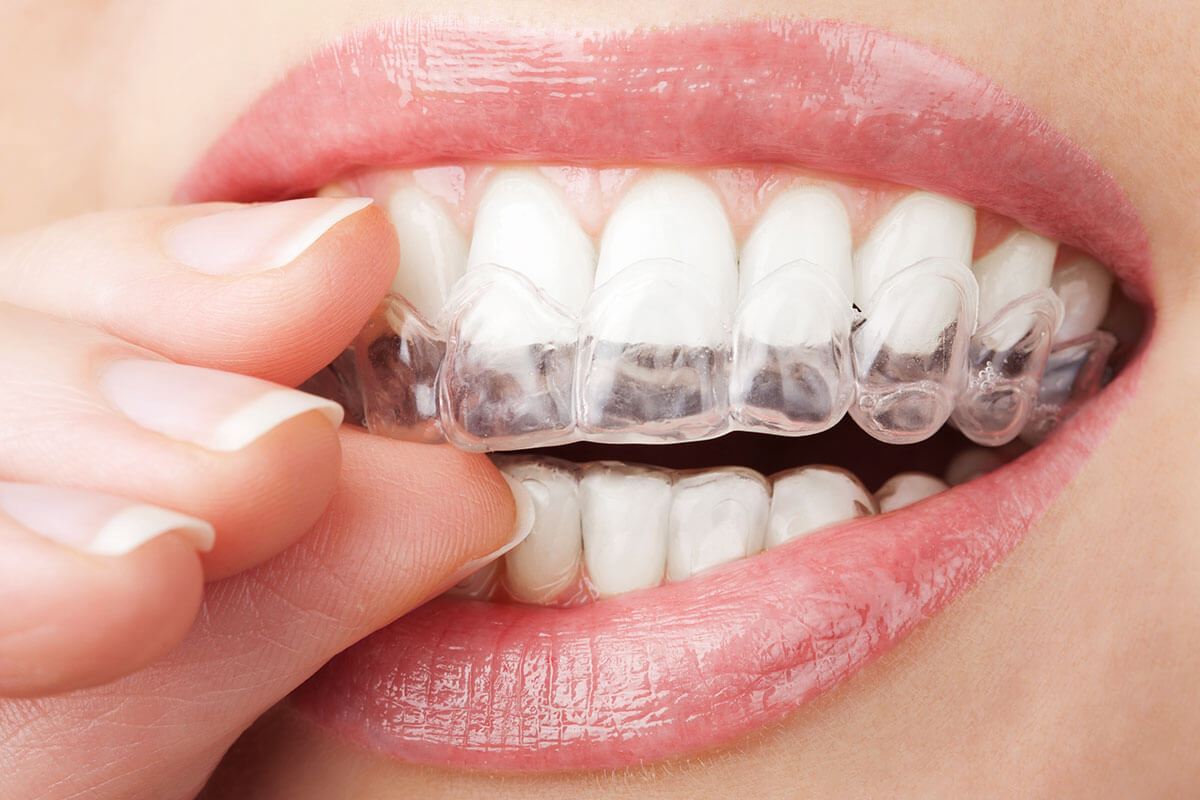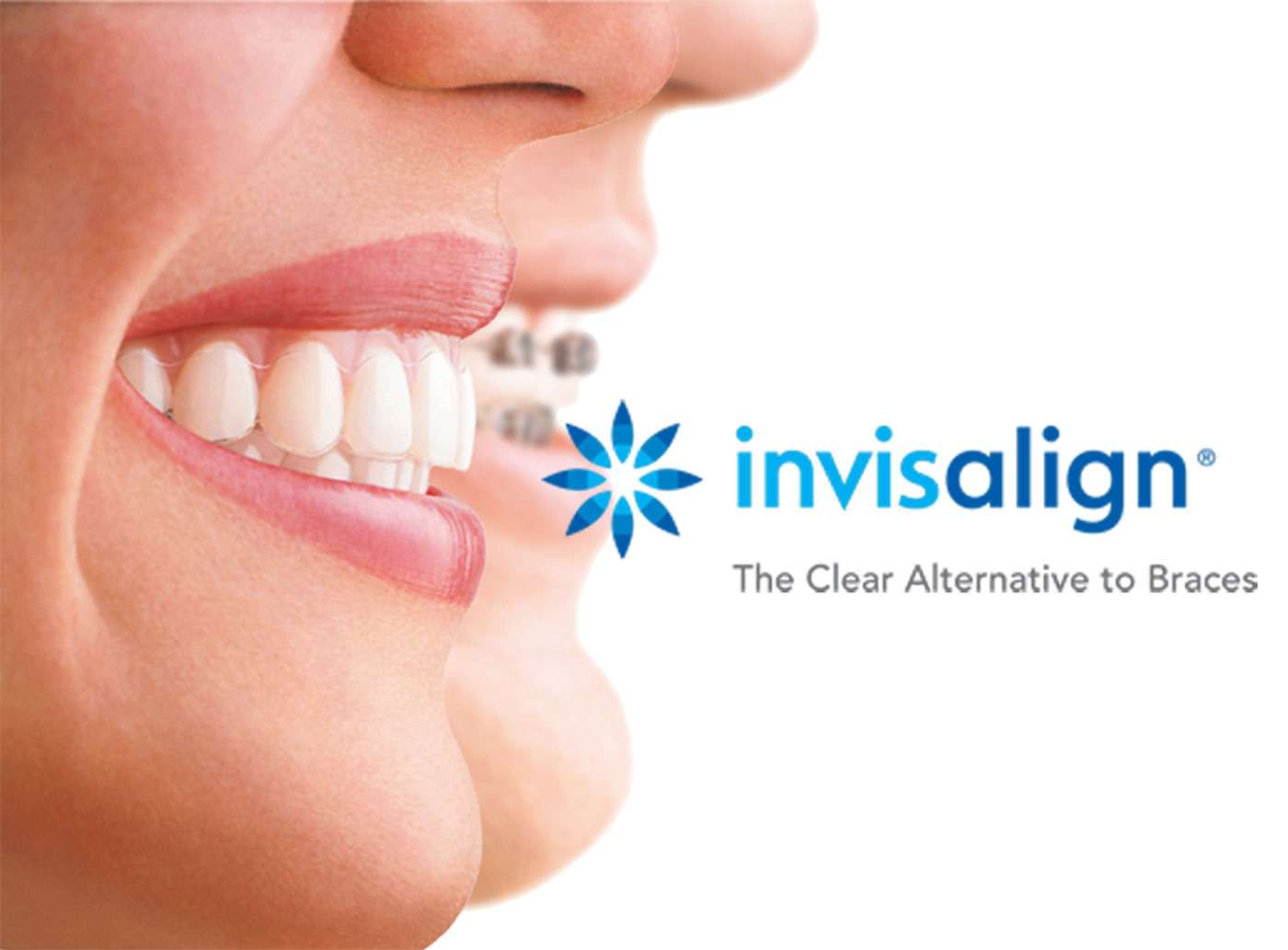Maintaining Oral Health While Utilizing Invisalign: Tips for a Smooth Experience
Maintaining Oral Health While Utilizing Invisalign: Tips for a Smooth Experience
Blog Article
Invisalign vs. Conventional Braces: Which Choice Is Right for You?
When thinking about orthodontic treatment, the option between Invisalign and typical dental braces presents a number of crucial factors that merit mindful evaluation. Invisalign uses a discreet option with removable aligners, while standard dental braces supply a more visible yet effective service for serious misalignment.
Review of Therapy Choices

On the other hand, standard dental braces consist of steel brackets and wires that are bonded to the teeth. This method applies continual stress in time to attain placement. While reliable for complicated orthodontic issues, typical dental braces call for routine sees for modifications and can pose obstacles in keeping oral health because of the problem of cleansing around cables and braces.
Both choices have their values, and the choice often hinges on specific dental conditions, way of life choices, and patient compliance. Inevitably, getting in touch with an orthodontic professional is vital for determining the most suitable therapy strategy customized to individual requirements. Understanding the subtleties of each choice can dramatically influence the general success of orthodontic therapy.
Visual Factors To Consider
A considerable factor affecting the option between Invisalign and standard dental braces is the aesthetic allure each treatment offers. Invisalign aligners are crafted from clear plastic, making them virtually undetectable when used.
On the other hand, conventional braces are composed of steel brackets and cords, which can be much more recognizable. While advancements in orthodontic innovation have led to the advancement of smaller braces and colored elastics, traditional braces still preserve an even more obvious account. For some people, the exposure of dental braces might prevent them from seeking needed therapy.
Eventually, the selection between Invisalign and typical dental braces may pivot on individual preferences pertaining to appearances. Patients who prioritize discretion commonly favor Invisalign, while those who are less worried regarding presence may select standard dental braces. Comprehending the aesthetic implications of each option is important for making an informed decision that straightens with one's way of living and preferences.
Convenience and Convenience

In terms of ease, Invisalign aligners are detachable, enabling people to enjoy their favorite foods without restriction and keep optimum oral hygiene. Cleaning and flossing are streamlined, as the aligners can be gotten throughout these routines, whereas conventional braces need cautious steering around brackets and wires.
In addition, Invisalign's progressive system permits fewer orthodontic check outs. Individuals usually receive several sets of aligners at as soon as, which can simplify the therapy procedure and lower time spent in the orthodontist's chair. In contrast, typical dental braces require regular modifications, making them less hassle-free for those with hectic routines. Invisalign. Overall, the comfort and comfort of Invisalign make it an enticing option for numerous individuals looking for orthodontic treatment.
Treatment Period and Effectiveness
While both Invisalign and standard braces work in dealing with dental imbalances, the duration of therapy can differ dramatically in between both options. Typically, Invisalign treatment can take anywhere from 12 to 18 months, relying on the complexity of the instance. The clear aligners function by slowly shifting teeth into their preferred positions, and regular follow-ups with an orthodontist help make sure progression continues to be on the right track.
On the other hand, standard braces frequently call for a longer dedication, usually varying from 18 months to 3 years. This results from their fixed nature and the Get More Info usage of braces and cords, which can be extra reliable for intricate instances and extreme misalignments (Invisalign). The treatment effectiveness of typical dental braces is well-documented, as they enable specific adjustments and greater control over tooth motion
Inevitably, the selection in between Invisalign and typical dental braces may hinge on both the awaited treatment period and the particular dental problems available. Consulting with an orthodontist is critical, as they can supply customized suggestions based on individual demands, making sure the picked method lines up with desired durations and end results.
Cost Contrast and Insurance Coverage Alternatives
Cost plays a considerable function in the decision-making procedure for individuals taking into consideration orthodontic treatment, whether choosing Invisalign or traditional dental braces. Usually, the cost of Invisalign ranges from $3,000 to $8,000, while typical dental braces generally cost in between $2,000 and $6,000. Aspects affecting these costs include the intricacy of the instance, the duration of treatment, and geographical area.
Insurance coverage can significantly affect out-of-pocket expenditures. Lots of oral insurance policy plans supply partial insurance coverage for orthodontic treatments, but the specifics can differ commonly. It is crucial for clients to review their insurance coverage to identify the degree of protection for either option. Normally, standard braces may be a lot more often covered by insurance policy strategies compared to Invisalign, which some insurers classify as a cosmetic procedure.
Furthermore, several orthodontic practices offer versatile layaway plan, making both therapy choices much more obtainable. People need to inquire concerning prospective funding options and price cuts for in advance payments. Examining the complete price, consisting of insurance policy benefits and layaway plan, is crucial for making an educated choice that lines up with both aesthetic preferences and spending plan considerations.

Final Thought
In recap, the choice between Invisalign and conventional braces hinges on multiple elements, consisting of aesthetic choices, comfort, treatment period, and cost. Invisalign offers a very discreet, detachable choice that assists in oral health and nutritional flexibility, while typical dental braces may visit their website be preferable for intricate oral problems and commonly come with a reduced cost point. Inevitably, assessment with an orthodontist is necessary to analyze specific situations and identify one of the most suitable treatment alternative for attaining optimal dental alignment.
When taking into consideration orthodontic treatment, the option in between Invisalign and conventional braces provides numerous important factors that warrant careful analysis.Contrasting Invisalign and typical braces discloses unique therapy choices for orthodontic improvement.While both Invisalign and conventional dental braces are effective read here in correcting oral misalignments, the duration of treatment can differ substantially in between the two alternatives.Expense plays a considerable duty in the decision-making process for individuals taking into consideration orthodontic treatment, whether opting for Invisalign or traditional dental braces.In recap, the selection in between Invisalign and standard dental braces hinges on numerous factors, consisting of visual preferences, convenience, treatment duration, and expense.
Report this page